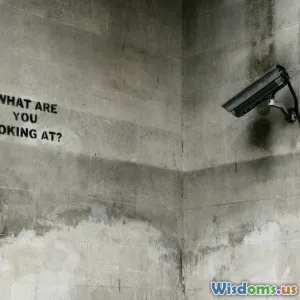
Debunking Myths About Low Socioeconomic Status Causing Crime
9 min read Explore and dismantle common misconceptions linking low socioeconomic status to crime, unveiling nuanced truths grounded in current research and social realities. (0 Reviews)
Debunking Myths About Low Socioeconomic Status Causing Crime
Crime and socioeconomic status (SES) have been long entwined in public discourse, media portrayals, and policy debates. A prevailing narrative suggests that poverty and low SES inherently breed crime; that economic hardship inevitably leads to criminal behavior. This oversimplified viewpoint persists, fueling stigmas and misdirecting social policies. But is this connection as clear-cut and causal as it seems?
In this article, we explore why blaming low SES alone for crime is misleading. We delve into empirical research, sociological insights, and real-world examples that challenge this myth. Ultimately, we reveal the complex interplay of factors contributing to crime rates and why nuanced understanding can guide better interventions and foster societal progress.
Understanding the Myth: Poverty Equals Crime?
The Origins and Popularity of the Assumption
The idea that poverty directly causes crime is intuitive and pervasive. People often observe that crime rates tend to be higher in impoverished neighborhoods and conclude poverty must be the driver. Media coverage often emphasizes crimes committed by economically disadvantaged individuals, reinforcing stereotypes.
Historically, during industrialization and urbanization in the 19th and 20th centuries, crowded slums saw elevated crime rates, spurring criminologists to link poverty and criminality. This notion was popularized in textbooks and public policy for decades.
Common Flaws in This Reasoning
- Correlation vs. Causation: High crime rates in poor areas do not mean poverty causes crime. Other conditions often co-exist with poverty.
- Ignoring Diversity Within Socioeconomic Groups: Not all low-SES individuals commit crimes; many prosperous people engage in white-collar crime.
- Oversimplification: Crime is a multi-dimensional social phenomenon; SES is just one factor among many.
By uncritically accepting this assumption, society may stigmatize entire communities and ignore the deeper causes of criminal behavior.
Evidence Challenging the Poverty-Crime Link
Research Highlights
1. Crime Occurs Across All Socioeconomic Strata
- The Federal Bureau of Investigation (FBI) statistics show white-collar crimes like embezzlement, fraud, and insider trading predominantly involve middle- and upper-class offenders.
- The Enron scandal, Bernie Madoff’s Ponzi scheme, and other high-profile cases illustrate that crime isn’t confined to poverty.
2. Crime Is Contextualized by Multiple Factors
- A 2017 longitudinal study in the American Journal of Sociology concluded that while poverty contributes to crime risk, neighborhood social cohesion, access to education, and policing practices significantly mediate outcomes.
3. Countries with Lower Income Inequality See Lower Crime Rates
- Research by Wilkinson and Pickett in The Spirit Level (2010) found societies with less income disparity (like Denmark, Norway, and Japan) experienced markedly lower violent crime rates, suggesting inequality—not absolute poverty—is a stronger driver.
4. Opportunity Structures Influence Crime Choices
- The routine activity theory in criminology posits that crime depends on a motivated offender, a suitable target, and absence of a capable guardian; poverty alone does not supply these elements.
Examples Refuting the Stereotype
- Much Crime in Affluent Urban Areas: High-end theft, cybercrime, and drug trafficking often thrive in wealthy cities with complex underground economies.
- Non-Majority of Poor Individuals Commit Crimes: Pew Research Center reported that 70% of residents in low-income neighborhoods never had police involvement, debunking generalized assumptions.
Root Causes and Contributing Factors Beyond SES
Social Disorganization and Community Breakdown
Jane Jacobs famously highlighted how strong neighborhood networks deter crime. Communities with fractured social bonds and low collective efficacy, often resulting from structural racism and historical disinvestment, are more vulnerable to crime regardless of income levels.
Systemic Inequality and Discrimination
Research reveals that racial profiling and unequal justice system treatment inflate arrest and incarceration rates in minority, low-income populations. This systemic bias blurs the distinction between actual crime rates and reported or punished crime.
Education and Social Capital
Access to quality education and social mobility opportunities correlates strongly with reduced criminal involvement. Programs emphasizing skill development and mentorship have successfully lowered juvenile delinquency in various regions.
Mental Health and Substance Abuse
Many crimes, particularly violent and property crimes, link closely with untreated mental health disorders and addiction rather than poverty alone. Healthcare access disparities exacerbate this issue in marginalized communities.
Consequences of Misattributing Crime to Poverty
Policy Missteps
Policies focusing solely on economic upliftment without addressing underlying systemic issues and social services often fail. For example, simply increasing income without improving schools or healthcare rarely cuts crime long-term.
Social Stigma and Marginalization
Blaming crime on poverty nurtures stereotypes that demonize poor populations, generating cycles of exclusion and limiting community integration.
Over-policing and Mass Incarceration
Law enforcement strategies frequently target impoverished neighborhoods, leading to ballooning incarceration rates without effectively lowering crime, disproportionately harming communities.
Neglecting Complex Solutions
Overemphasis on SES as the root cause diverts attention from innovative, multi-faceted approaches that tackle structural inequalities, mental health, education reform, and community policing initiatives.
Towards Informed Approaches: What Works?
Holistic Community Development
Successful programs integrate economic support, education, mental health services, and community empowerment. Example: The Harlem Children’s Zone combines neighborhood investment with social services, showing positive impacts in youth crime reduction.
Reforming Justice and Policing Systems
Implementing bias training, restorative justice programs, and community policing helps address systemic injustices and builds trust.
Investing in Education and Job Training
Initiatives offering vocational training and scholarships help at-risk youth find alternative paths away from crime.
Addressing Income Inequality
Broader policies that reduce disparities and bolster social safety nets, including affordable housing and universal healthcare access, correlate with safer societies.
Mental Health Accessibility
Prioritizing comprehensive mental health care and substance abuse treatment, particularly in marginalized communities, reduces crime linked to these issues.
Conclusion: Rethinking Crime and Socioeconomic Status
The popular myth that low socioeconomic status directly causes crime is an oversimplification that hinders more profound understanding and effective policies. Crime emanates from an intricate matrix of social, economic, psychological, and systemic factors beyond income level alone.
By dismantling unfounded assumptions, society can embrace nuanced, evidence-driven approaches that reduce inequalities, reform justice systems, promote education and mental health care, and empower communities. Only with a comprehensive perspective can we hope to mitigate crime in a just, sustainable way that respects the dignity and potential of every individual — regardless of their socioeconomic background.
“Poverty and crime are not synonymous. Understanding why requires us to look beyond income to the structures that shape lives and opportunities.” — Dr. Lisa Maher, Sociologist
Rate the Post
User Reviews
Popular Posts




















